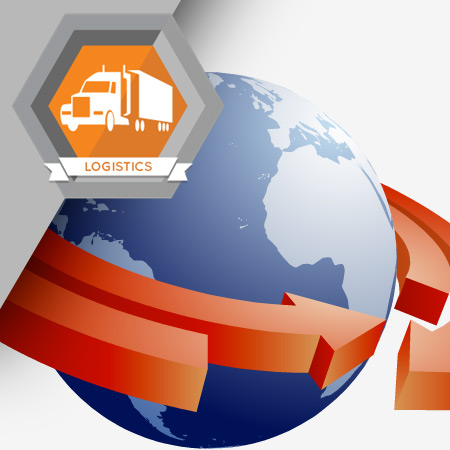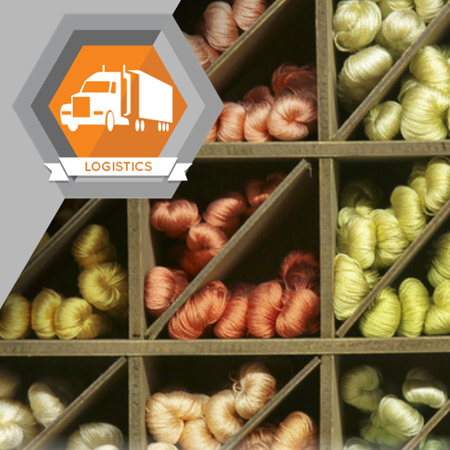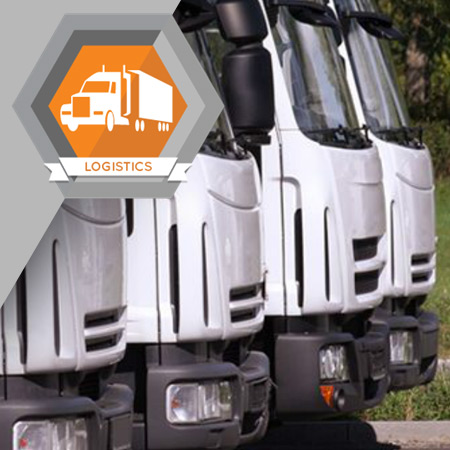
Have you ever thought about the journey your smart phone took from the manufacturer to your hands? After it was manufactured, it then it went through a detailed logistics process.
Logistics is way more than just transportation! It is a complex system that is essential to the manufacturing process.
Learning Objectives
- Define logistics
- Identify key accomplishments in the history of logistics
- Identify the main types of logistics
- Describe the fundamental tasks associated with logistics
Language: English
Micro-module: No
Micro-module Series: No

Today, technology and logistics are deeply intertwined. Updated IT systems ensure the flow of products and data. Trade and product sales would sink without the right technology. In this course you will take a closer to look at a few important processes for supply chain management and material handling, as well as the technology needed for those processes.
Learning Objectives
- Differentiate among the various technologies that enable and support supply chain management
- Identify the main categories associated with material handling
- Differentiate among the various technologies that enable and support material handling
Language: English
Micro-module: No
Micro-module Series: No

Inventory is the result of tons of planning and processes. Too much inventory is always bad for the company. In this course you will discover the real meaning of inventory.
Learning Objectives
- Describe what inventory is and its importance
- Define lead time and its effect on inventory
- Determine the appropriate amount of inventory needed based on the situation
- Define Just-In-Time inventory
- Differentiate among the three types of inventory costs
- Describe how inventory management works
- Identify different types of inventory packaging
Language: English
Micro-module: No
Micro-module Series: No

When you think about logistics, you think about moving. This course focuses on some great strategies for getting finished products from one point to another, whether it is a retail store or the customer.
Learning Objectives
- Define product distribution and describe its importance
- Define warehousing and describe its role in supply chain management
- Identify steps involved in order processing
- Define material handling systems and describe how they function
- Identify different modes for transporting goods
Language: English
Micro-module: No
Micro-module Series: No

There are three things you must be aware of in the world of logistics: safety, quality and the environment. Companies must develop programs and policies to make sure that no one gets hurt and that they are taking measures to avoid damaging the environment. They do this while working to make sure that their products are successfully handled and distributed.
Learning Objectives
- Describe the importance of safety and safety education in logistics
- Define quality as it relates to logistics
- Describe and define "green logistics"
Language: English
Micro-module: No
Micro-module Series: No

Do you think you have got what it takes to be a winner in logistics? To make sure products are transported safely from the manufacturer’s door to the customer’s door? It takes many great minds to put together a winning logistics plan. A win in logistics means a win for the company and a win for customers who use the products.
Learning Objectives
- List the main elements that can help a logistics company "win"
- Understand how costs help determine a logistics company's success
- Recognize logistics teamwork strategies
- Explain how delivery, safety, environment and customers influence success
Language: English
Micro-module: No
Micro-module Series: No

The world of logistics is like its own ecosystem. Teams, roles and processes are tightly connected and dependent upon one another within companies and industries.
Learning Objectives
- Identify teams that work together in the logistics world
- Articulate the overall mission of a team
- Describe various roles and responsibilities within logistics teams
- Describe how teams and individuals work together to prepare products for delivery
Language: English
Micro-module: No
Micro-module Series: No
